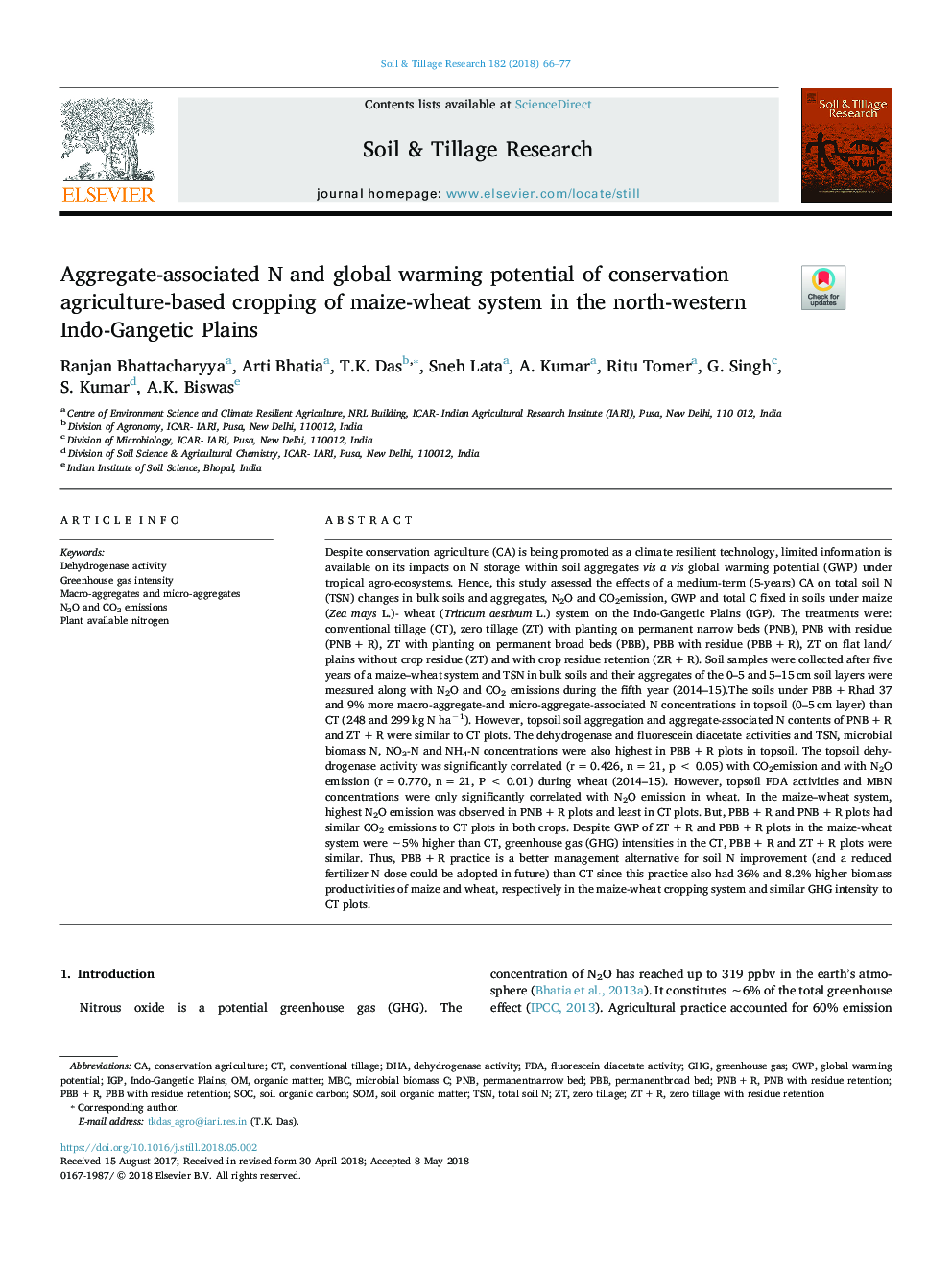| Article ID | Journal | Published Year | Pages | File Type |
|---|---|---|---|---|
| 6772964 | Soil and Tillage Research | 2018 | 12 Pages |
Abstract
Despite conservation agriculture (CA) is being promoted as a climate resilient technology, limited information is available on its impacts on N storage within soil aggregates vis a vis global warming potential (GWP) under tropical agro-ecosystems. Hence, this study assessed the effects of a medium-term (5-years) CA on total soil N (TSN) changes in bulk soils and aggregates, N2O and CO2emission, GWP and total C fixed in soils under maize (Zea mays L.)- wheat (Triticum aestivum L.) system on the Indo-Gangetic Plains (IGP). The treatments were: conventional tillage (CT), zero tillage (ZT) with planting on permanent narrow beds (PNB), PNB with residue (PNBâ¯+â¯R), ZT with planting on permanent broad beds (PBB), PBB with residue (PBBâ¯+â¯R), ZT on flat land/plains without crop residue (ZT) and with crop residue retention (ZRâ¯+â¯R). Soil samples were collected after five years of a maize-wheat system and TSN in bulk soils and their aggregates of the 0-5 and 5-15â¯cm soil layers were measured along with N2O and CO2 emissions during the fifth year (2014-15).The soils under PBBâ¯+â¯Rhad 37 and 9% more macro-aggregate-and micro-aggregate-associated N concentrations in topsoil (0-5â¯cm layer) than CT (248 and 299â¯kg N haâ1). However, topsoil soil aggregation and aggregate-associated N contents of PNBâ¯+â¯R and ZTâ¯+â¯R were similar to CT plots. The dehydrogenase and fluorescein diacetate activities and TSN, microbial biomass N, NO3-N and NH4-N concentrations were also highest in PBBâ¯+â¯R plots in topsoil. The topsoil dehydrogenase activity was significantly correlated (râ¯=â¯0.426, nâ¯=â¯21, pâ¯<â¯0.05) with CO2emission and with N2O emission (râ¯=â¯0.770, nâ¯=â¯21, Pâ¯<â¯0.01) during wheat (2014-15). However, topsoil FDA activities and MBN concentrations were only significantly correlated with N2O emission in wheat. In the maize-wheat system, highest N2O emission was observed in PNBâ¯+â¯R plots and least in CT plots. But, PBBâ¯+â¯R and PNBâ¯+â¯R plots had similar CO2 emissions to CT plots in both crops. Despite GWP of ZTâ¯+â¯R and PBBâ¯+â¯R plots in the maize-wheat system were â¼5% higher than CT, greenhouse gas (GHG) intensities in the CT, PBBâ¯+â¯R and ZTâ¯+â¯R plots were similar. Thus, PBBâ¯+â¯R practice is a better management alternative for soil N improvement (and a reduced fertilizer N dose could be adopted in future) than CT since this practice also had 36% and 8.2% higher biomass productivities of maize and wheat, respectively in the maize-wheat cropping system and similar GHG intensity to CT plots.
Keywords
Related Topics
Physical Sciences and Engineering
Energy
Renewable Energy, Sustainability and the Environment
Authors
Ranjan Bhattacharyya, Arti Bhatia, T.K. Das, Sneh Lata, A. Kumar, Ritu Tomer, G. Singh, S. Kumar, A.K. Biswas,
